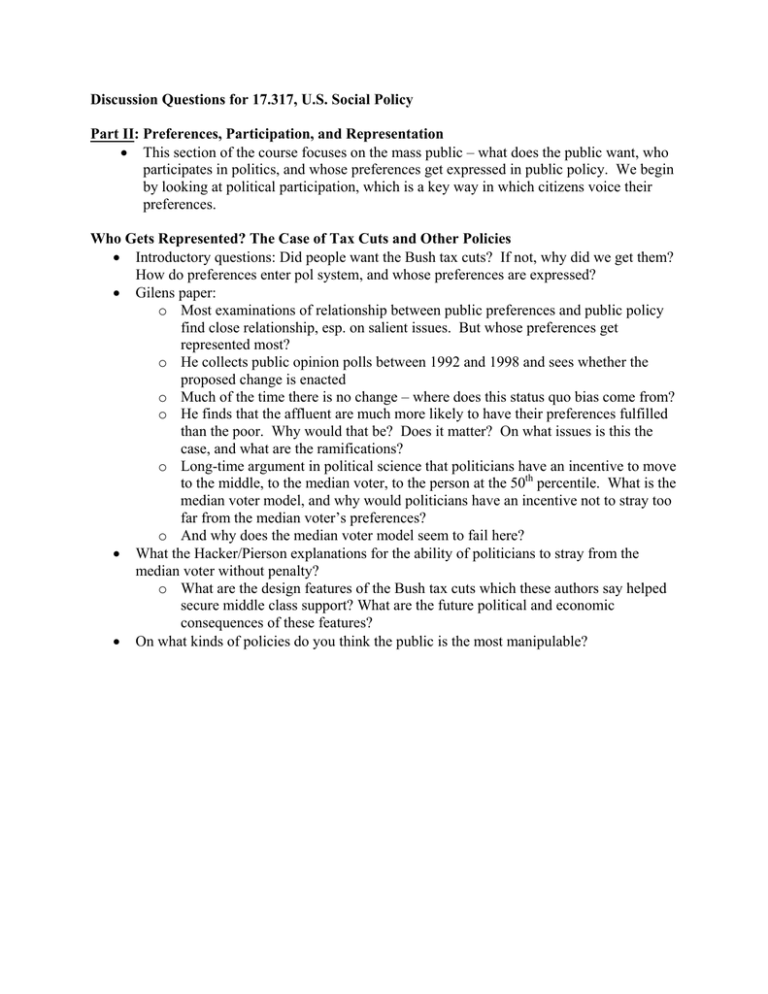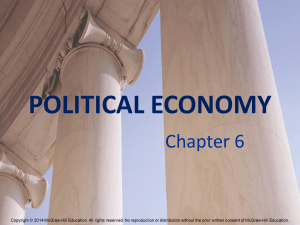Discussion Questions for 17.317, U.S. Social Policy
advertisement

Discussion Questions for 17.317, U.S. Social Policy Part II: Preferences, Participation, and Representation • This section of the course focuses on the mass public – what does the public want, who participates in politics, and whose preferences get expressed in public policy. We begin by looking at political participation, which is a key way in which citizens voice their preferences. Who Gets Represented? The Case of Tax Cuts and Other Policies • Introductory questions: Did people want the Bush tax cuts? If not, why did we get them? How do preferences enter pol system, and whose preferences are expressed? • Gilens paper: o Most examinations of relationship between public preferences and public policy find close relationship, esp. on salient issues. But whose preferences get represented most? o He collects public opinion polls between 1992 and 1998 and sees whether the proposed change is enacted o Much of the time there is no change – where does this status quo bias come from? o He finds that the affluent are much more likely to have their preferences fulfilled than the poor. Why would that be? Does it matter? On what issues is this the case, and what are the ramifications? o Long-time argument in political science that politicians have an incentive to move to the middle, to the median voter, to the person at the 50th percentile. What is the median voter model, and why would politicians have an incentive not to stray too far from the median voter’s preferences? o And why does the median voter model seem to fail here? • What the Hacker/Pierson explanations for the ability of politicians to stray from the median voter without penalty? o What are the design features of the Bush tax cuts which these authors say helped secure middle class support? What are the future political and economic consequences of these features? • On what kinds of policies do you think the public is the most manipulable?


